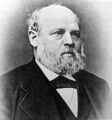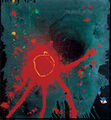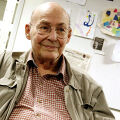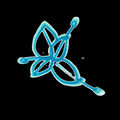Template:Selected anniversaries/January 24: Difference between revisions
No edit summary |
No edit summary |
||
| Line 1: | Line 1: | ||
<gallery> | <gallery> | ||
|| *** DONE: Pics *** | |||
||AD 41: Roman Emperor Caligula, known for his eccentricity and sadistic despotism, is assassinated by his disgruntled Praetorian Guards. The Guard then proclaims Caligula's uncle Claudius as Emperor. Pic. | ||AD 41: Roman Emperor Caligula, known for his eccentricity and sadistic despotism, is assassinated by his disgruntled Praetorian Guards. The Guard then proclaims Caligula's uncle Claudius as Emperor. Pic. | ||
| Line 38: | Line 40: | ||
||1921: Susan Jane Cunningham dies ... mathematician. Cunningham was instrumental in the founding and development of Swarthmore College. Pic. | ||1921: Susan Jane Cunningham dies ... mathematician. Cunningham was instrumental in the founding and development of Swarthmore College. Pic. | ||
||1925: Meir "Manny" Lehman, born ... computer scientist and academic. His research contributions include the early realisation of the software evolution phenomenon and the eponymous Lehman's laws of software evolution. Pic search | ||1925: Meir "Manny" Lehman, born ... computer scientist and academic. His research contributions include the early realisation of the software evolution phenomenon and the eponymous Lehman's laws of software evolution. Pic search: https://www.google.com/search?q=manny+lehman+computer+science | ||
||1931: Lars Hörmander born ... mathematician and academic. Pic. | ||1931: Lars Hörmander born ... mathematician and academic. Pic. | ||
| Line 58: | Line 60: | ||
File:Cosmos-954 debris.png|link=Kosmos 954 (nonfiction)|1978: Soviet satellite [[Kosmos 954 (nonfiction)|Kosmos 954]], with a nuclear reactor on board, burns up in Earth's atmosphere, scattering radioactive debris over Canada's Northwest Territories. Only 1% is recovered. | File:Cosmos-954 debris.png|link=Kosmos 954 (nonfiction)|1978: Soviet satellite [[Kosmos 954 (nonfiction)|Kosmos 954]], with a nuclear reactor on board, burns up in Earth's atmosphere, scattering radioactive debris over Canada's Northwest Territories. Only 1% is recovered. | ||
||1982: Karol Borsuk dies ... mathematician. His main interest was topology. Borsuk introduced the theory of absolute retracts (ARs) and absolute neighborhood retracts (ANRs), and the cohomotopy groups, later called Borsuk–Spanier cohomotopy groups. He also founded Shape theory. He has constructed various beautiful examples of topological spaces, e.g. an acyclic, 3-dimensional continuum which admits a fixed point free homeomorphism onto itself; also 2-dimensional, contractible polyhedra which have no free edge. His topological and geometric conjectures and themes stimulated research for more than half a century. | ||1982: Karol Borsuk dies ... mathematician. His main interest was topology. Borsuk introduced the theory of absolute retracts (ARs) and absolute neighborhood retracts (ANRs), and the cohomotopy groups, later called Borsuk–Spanier cohomotopy groups. He also founded Shape theory. He has constructed various beautiful examples of topological spaces, e.g. an acyclic, 3-dimensional continuum which admits a fixed point free homeomorphism onto itself; also 2-dimensional, contractible polyhedra which have no free edge. His topological and geometric conjectures and themes stimulated research for more than half a century. Pic. | ||
File:Werner Fenchel.jpg|link=Werner Fenchel (nonfiction)|1988: Mathematician and academic [[Werner Fenchel (nonfiction)|Werner Fenchel]] dies. He established the basic results of convex analysis and nonlinear optimization theory which would, in time, serve as the foundation for nonlinear programming. | File:Werner Fenchel.jpg|link=Werner Fenchel (nonfiction)|1988: Mathematician and academic [[Werner Fenchel (nonfiction)|Werner Fenchel]] dies. He established the basic results of convex analysis and nonlinear optimization theory which would, in time, serve as the foundation for nonlinear programming. | ||
Revision as of 07:22, 24 January 2020
1798: Mathematician Karl Georg Christian von Staudt born. He will use synthetic geometry to provide a foundation for arithmetic.
1879: Glassblower, physicist, and inventor Johann Heinrich Wilhelm Geißler dies. He invented the Geissler tube, made of glass and used as a low pressure gas-discharge luminescence tube.
1960: Film director and arms dealer Egon Rhodomunde raises funds for new film about the upcoming Goldsboro B-52 crash.
1961: Goldsboro B-52 crash: A bomber carrying two H-bombs breaks up in mid-air over North Carolina. The uranium core of one weapon remains lost.
1974: Industrialist, public motivational speaker, and alleged crime boss Baron Zersetzung says he is "confident that the Goldsboro B-52 crash is a sound business investment."
1978: Soviet satellite Kosmos 954, with a nuclear reactor on board, burns up in Earth's atmosphere, scattering radioactive debris over Canada's Northwest Territories. Only 1% is recovered.
1988: Mathematician and academic Werner Fenchel dies. He established the basic results of convex analysis and nonlinear optimization theory which would, in time, serve as the foundation for nonlinear programming.
2016: John Hoyland's Lebanon stolen in broad daylight by alleged supervillain Gnotilus.
2016: Cognitive scientist and artificial intelligence researcher Marvin Minsky dies.
2018: Steganographic analysis of Blue Foliage unexpectedly reveals "at least four hundred kilobytes" of previously unknown Gnomon algorithm functions.
2017: Advances in zero-knowledge proof theory "are central to the detection and prevention of crimes against mathematical constants," says mathematician and crime-fighter Janet Beta.









